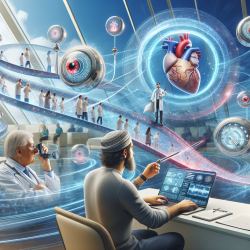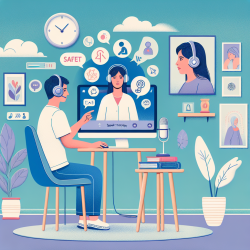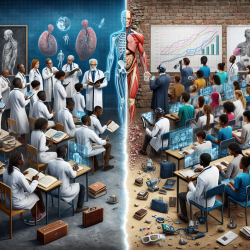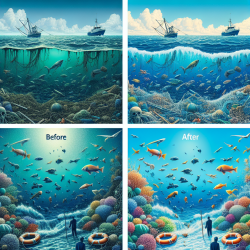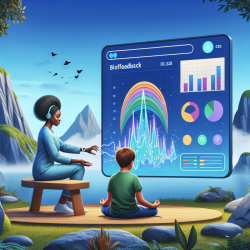In the realm of special education, practitioners constantly seek innovative ways to enhance the therapeutic experience for students. TinyEYE, a pioneer in online therapy services, recognizes the importance of integrating cutting-edge technology to deliver superior care. A recent breakthrough in biosensor technology, detailed in the research paper "Ultra-High Sensitivity Terahertz Microstructured Fiber Biosensor for Diabetes Mellitus and Coronary Heart Disease Marker Detection," offers a promising avenue for improving diagnostic accuracy and treatment outcomes.
This groundbreaking study presents a Zeonex-based microstructured fiber (MSF) biosensor, designed to detect markers for Diabetes Mellitus (DM) and Coronary Heart Disease (CHD) with unprecedented sensitivity. By leveraging terahertz time-domain spectroscopy, this biosensor can significantly enhance clinical diagnostics, ensuring timely and accurate detection of these chronic conditions.
Why This Matters for Online Therapy
As practitioners in special education, understanding the health conditions of our students is crucial. Conditions like DM and CHD can impact cognitive and physical abilities, influencing therapy outcomes. The ability to accurately and swiftly detect these conditions using advanced biosensors can help tailor therapy sessions to meet the unique needs of each student.
Key Benefits of the Terahertz MSF Biosensor
- Ultra-High Sensitivity: The biosensor exhibits a relative sensitivity of up to 100.35% at 2.2 THz, allowing for precise detection of disease markers.
- Low Loss: The sensor maintains an ultra-low coupling loss of about 10-13 cm-1, ensuring accurate readings.
- Easy Fabrication: The biosensor can be easily fabricated using 3D printing and extrusion technologies, making it accessible for widespread use.
- Rapid Diagnosis: The MSF biosensor provides a quick and efficient method for detecting disease markers, reducing the time needed for diagnosis.
Implementing This Technology in Practice
For practitioners looking to incorporate this advanced technology into their practice, here are some steps to consider:
- Stay Informed: Keep abreast of the latest research and technological advancements in biosensors and their applications in clinical diagnostics.
- Collaborate with Healthcare Providers: Work closely with healthcare professionals to integrate biosensor technology into the diagnostic process for students.
- Invest in Training: Ensure that you and your team are trained in the use of new diagnostic tools and understand how to interpret the data they provide.
- Customize Therapy Plans: Use the diagnostic information obtained from the biosensor to tailor therapy sessions to the specific needs of each student, addressing any underlying health conditions that may affect their learning and development.
Encouraging Further Research
The field of biosensor technology is rapidly evolving, and continued research is essential to unlocking its full potential. Practitioners are encouraged to engage with ongoing studies, contribute to research efforts, and advocate for the adoption of advanced diagnostic tools in special education settings.
To read the original research paper, please follow this link: Ultra-High Sensitivity Terahertz Microstructured Fiber Biosensor for Diabetes Mellitus and Coronary Heart Disease Marker Detection.
By embracing these innovations, TinyEYE aims to provide the best possible care for students, ensuring that their unique needs are met with precision and compassion.
